PHANG NGA BAY TOUR (Day 13 - part 1)
Again we got up before sunrise. We had a free breakfast at the hotel buffet then waited for our tour bus to show up. We headed north for just over an hour, crossing over the Sarasin bridge into the province of Phang-nga.
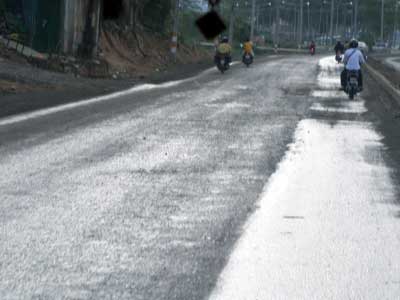
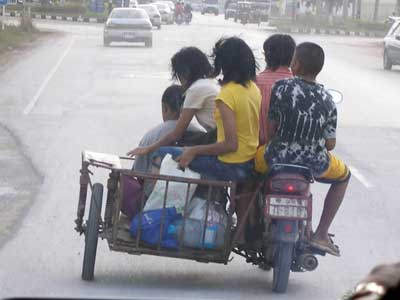
Our first stop was at a rubber tapping demonstration. This farm had about 700 trees. A tree must be at least 15 years old before it can be tapped. Each tree is sliced once a day and can be used for 25 years. Apparently you can't tap early in the morning because it's too cold and the sap won't run. There isn't as much sap during the dry season.
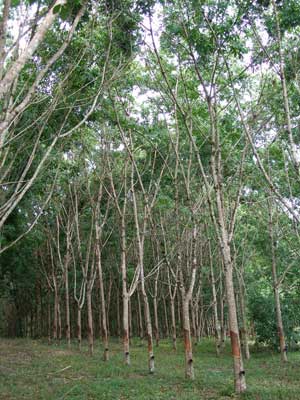
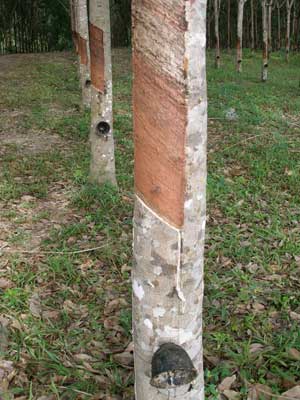
A guide pulled off a thin white strip that looked like a rubber band. Then using sharp a tool, he scraped off a small row at the bottom of a long scar patch. White liquid welled up and then ran down a channel into a cup. The sap will drip for 3 - 4 hours and fill up 1/2 a cup. Four cups make one sheet of latex, which they can sell for 43 Baht (just over US$1).
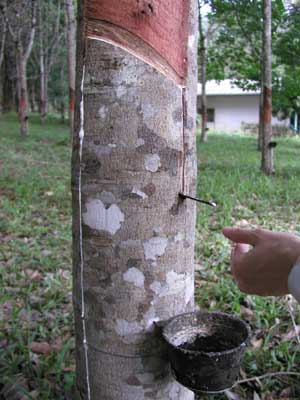

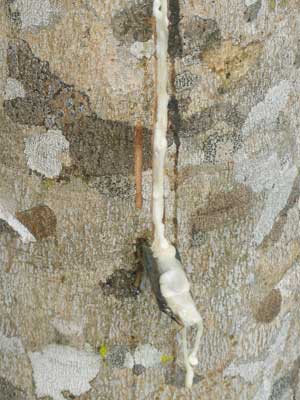
Wet, running sap.... and dried sap
It was only a 10 minute drive to Wat Suwan Khuha or Buddha Cave. When the Thai were fighting the Burmese, they hid their Buddha statue in this cave. This mountain actually contains many caves. There were a zillion dogs and monkeys about outside, and many medium-sized bats inside.
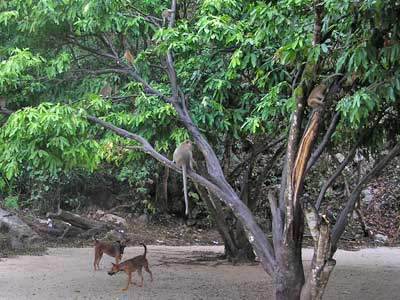

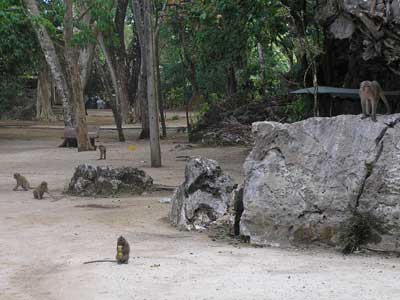
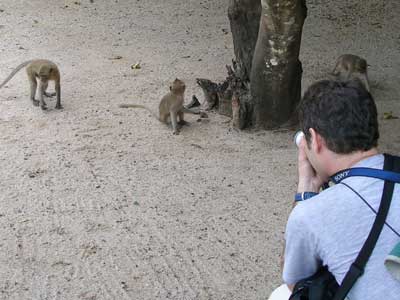
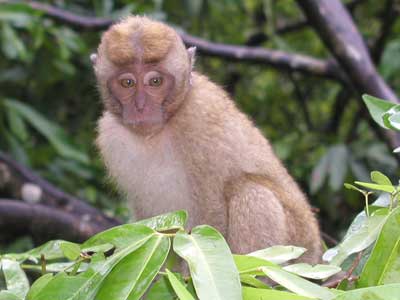
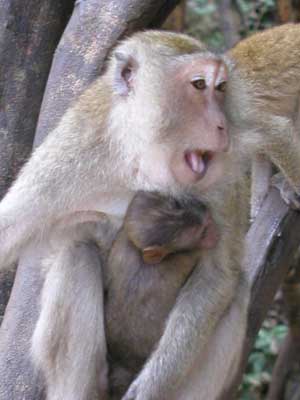
These were very likely crab-eating macaques.
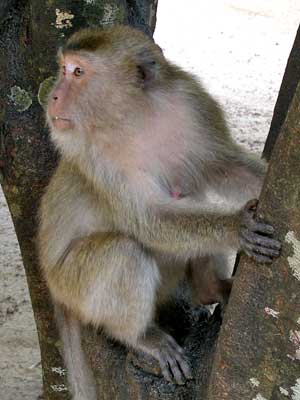

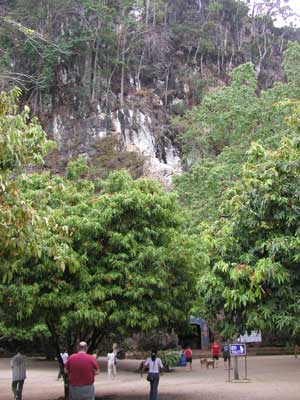

The cave entrance
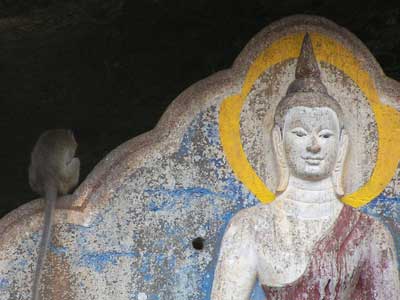

This prang supposedly contains the bones of the Na Takuathung family, who were the local rulers about 160 years ago.

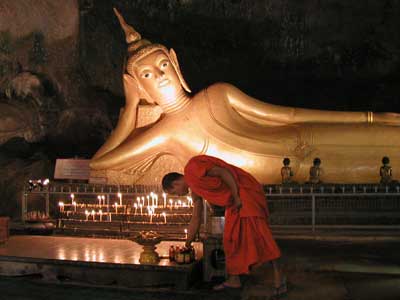
The 50-foot long reclining Buddha
Even though styles vary, the posture and details of each statue have the same meaning. There are over 100 different poses, with each one representing an event or aspect of his life. A majority of these are of him sitting with different hand positions (called mudras) which may represent such concepts as fearlessness, inner peace, or the transmission of knowledge.
A reclining Buddha represents his final moments before dying at age 80 and entering into nirvana. If his right arm is up and supporting his head, he hasn't quite died yet. If it's at his side and his head rests on a cushion, well, that was it.
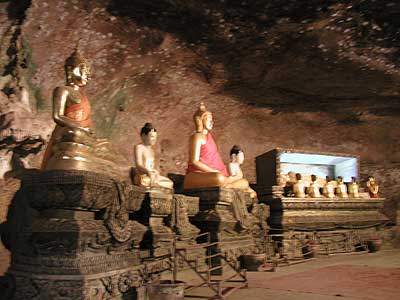
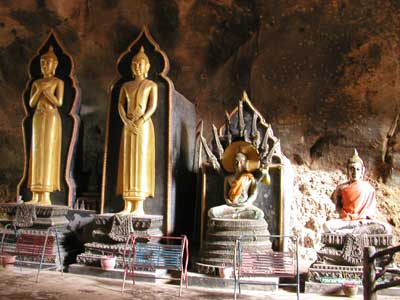
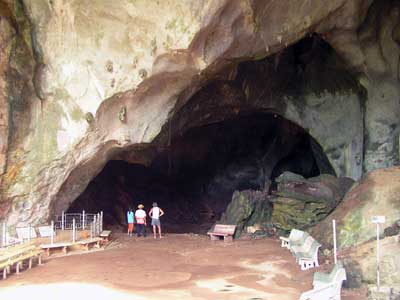
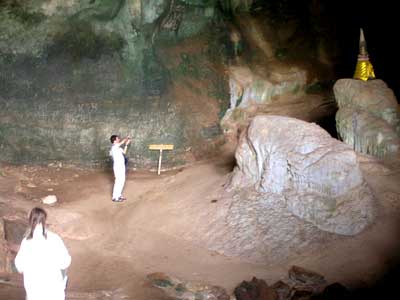
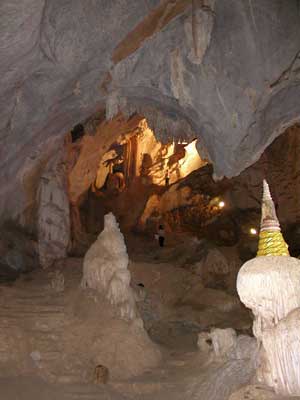
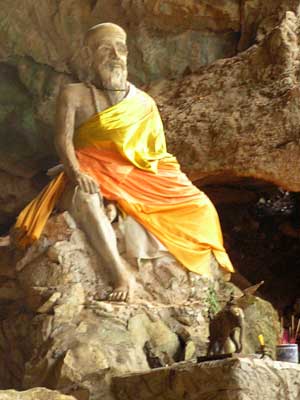

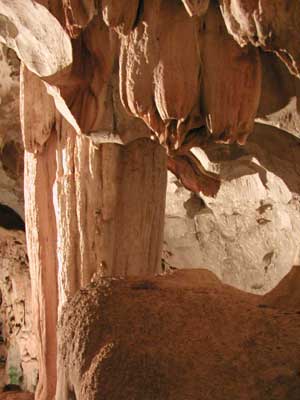
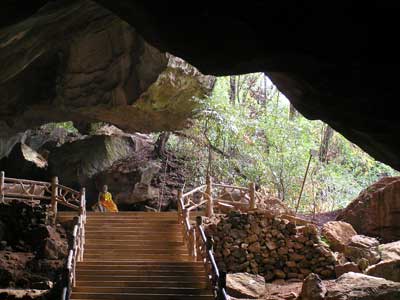
It was another 10 minute drive to the boat. We were the only tourists. There used to be 15 - 20 people per boat, but the December 2004 tsunami (just a few months ago) really hurt their business. Kate, our guide, was out here on a boat when it hit, but she said she didn't notice anything.
We headed out into Phang Nga bay with its many limestone karst towers, located within Ao Phang-Nga National Park.
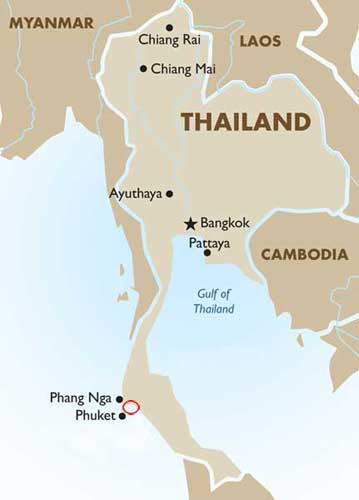
The location of Phang Nga bay
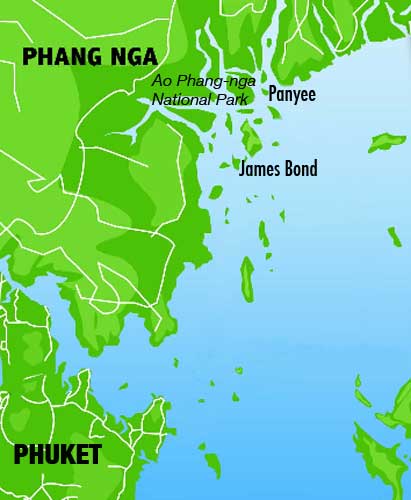
A close up of the areas and islands we would be exploring
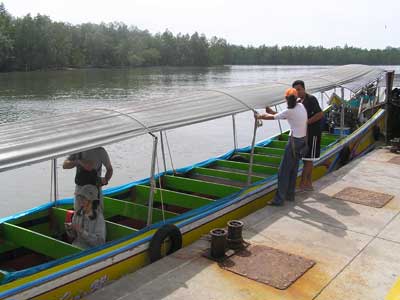
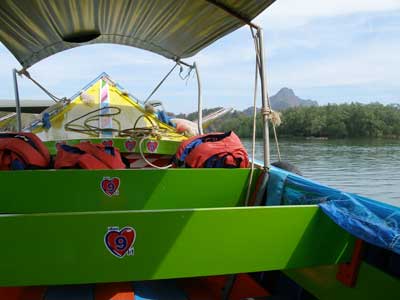
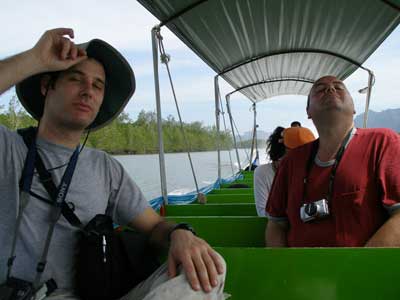
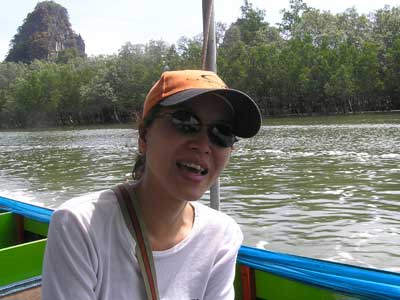
Ron and Gerald... and Kate
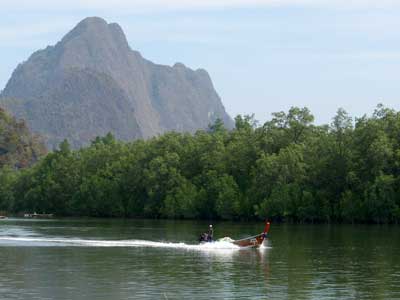
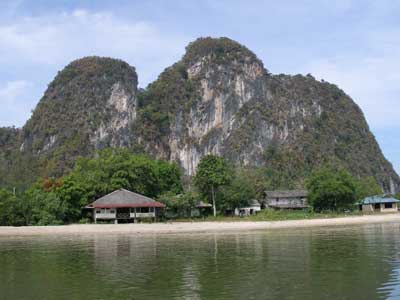
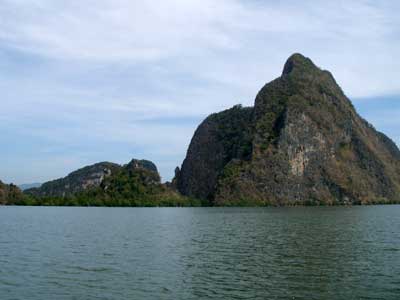
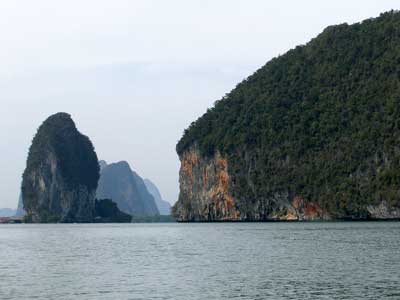
We passed by Koh Panyee, a Muslim fishing village built entirely on the water.
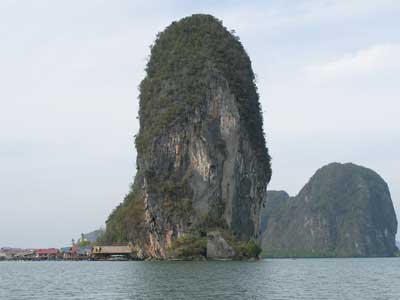
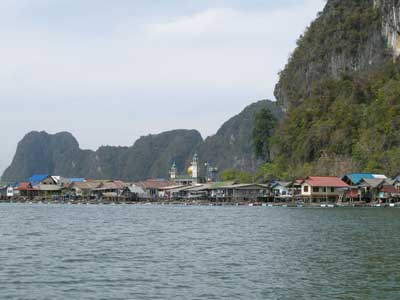
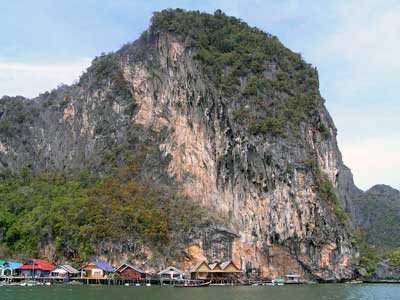
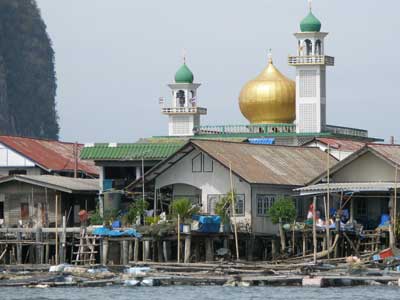
The mosque had a shiny gold dome.

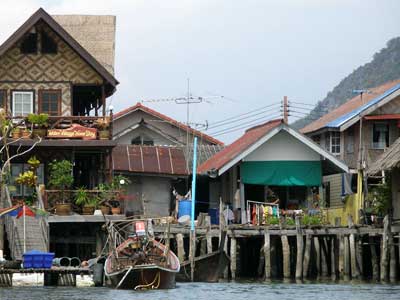
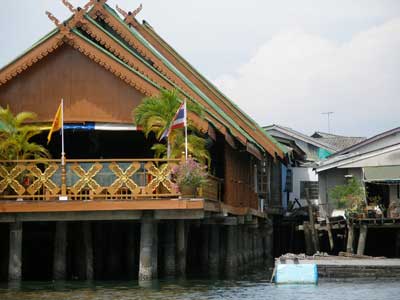
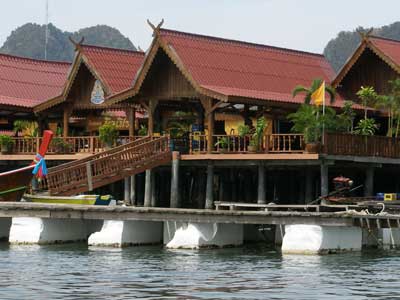

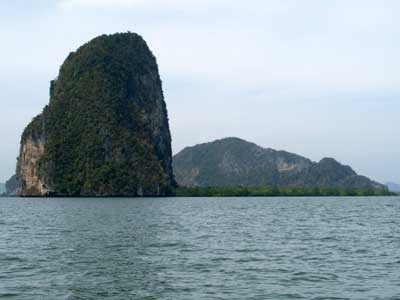
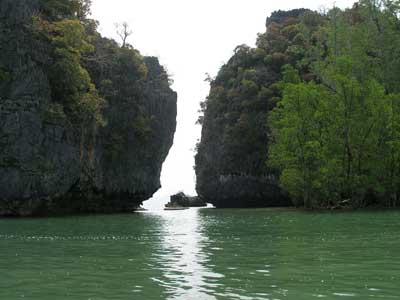
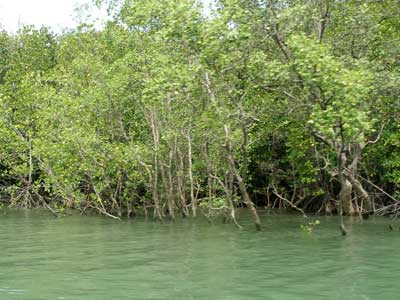
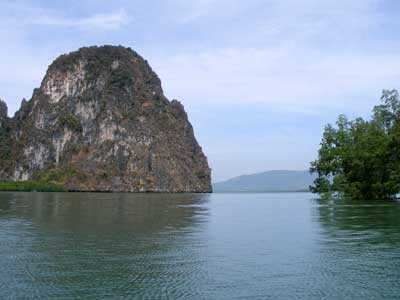
Our diver maneuvered us through a narrow stalactite cave!
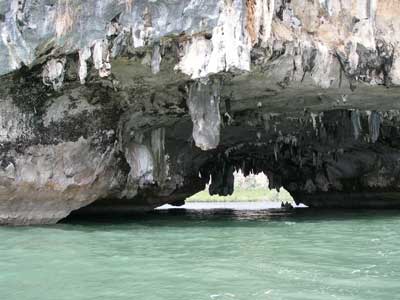

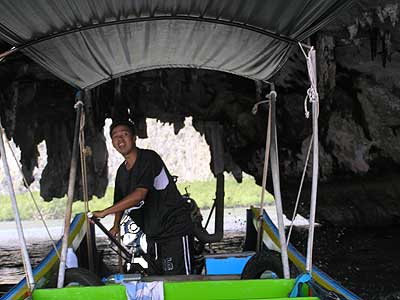
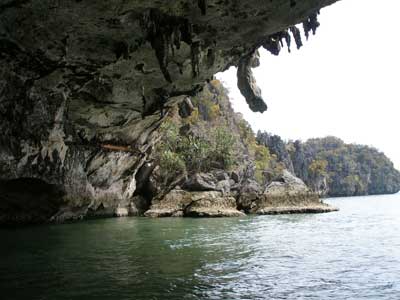
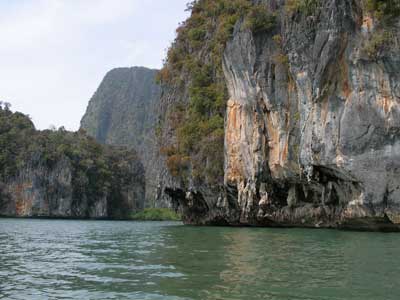
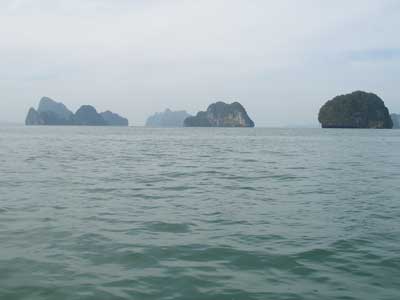
return • continue

